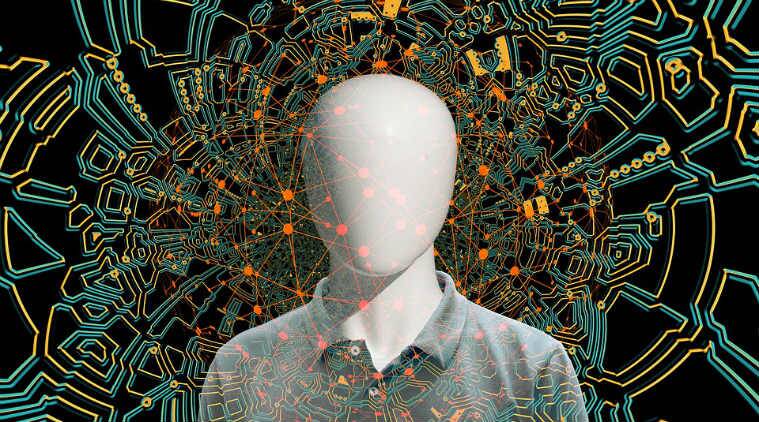
Could this mean our favourite sci-fi TV shows may come to life?
A robot uprising has been a common feature of sci-fi and pop culture since the dawn of the technological age. However, with computers becoming smarter and innovators revolutionising the application of technology in day-to-day activities, it has forced our hand in the fight for being the alpha species on planet Earth. Achieving symbiosis might prove to be the only solution to maintain the relevance of humankind in the future. Elon Musk’s new venture, Neuralink, which seems to be eerily similar to the brain implants seen in sci-fi movies, has taken us one step closer to achieving AI symbiosis! It, however, involves solving an entourage of other problems along the way. Here is the why, what, and how of Neuralink!
Applications:
Medical:
Neuralink has the potential to revolutionise the medical industry. The initial aim of Neuralink is to solve the dependence caused by paralysis. The scientists at Neuralink are trying to make a Neura-shunt—essentially “linked” devices. One inside the brain and the other inside the paralysed part of the body. Those two devices will then talk to each other and can help people with paralysis regain independence.
Along with this, once developed entirely, it can treat a wide range of neurological disorders, restore sensory and movement function, and completely change the way we interact with the world around us.
Technical:
Musk’s innovative work ethic or the numerous podcasts and subreddits discussing crazy ideas that we find that Neuralink has applications extending way beyond the medical field — Neuralink started as a company to solve the medical mystery surrounding spinal cord injuries. Today, Musk aims to achieve what was previously considered science fiction and the stuff of dreams. For example, the company claims that with a Neuralink device embedded into your skull, you could be looking at controlling electronics with just your mind. Another potential application is communicating thoughts instantly with two devices personally, eliminating the time that our brains need to process speech.
Some quirky applications include playing music directly inside your head. It may pull a feather out of the cap from one of our favourite movies, like The Matrix, where Neo (played by Keanu Reaves) learns Kung-Fu or how to fly a helicopter with a click of a button. It looks like Isaac Asimov’s dream in the Foundation saga of beating entropy might finally become a reality with us being able to preserve ourselves digitally. However, the most exciting application could have profound implications on the future of humankind.
Neuralink could hold the key to achieving symbiosis. Musk claims we have already transcended both limbic and cortex layers of existence and created a virtual tertiary layer with our increased technology usage. Neuralink may help us create an AI extension of one’s conscience extrinsic to the two underlying layers and might successfully avert the inherent existential threat that AI poses to humanity.
Ethical Conundrum: Our favourite(scary?) TV shows coming to life?
If there is anything that a show like Black Mirror or a movie like The Matrix has taught us — do not mess with AI. The world can have only one alpha species, and AI looks to be the front-runner in that race. However, this is not the only ethical hurdle that the company faces.
With increasing dependency on technology and the ease with which data is accessed, how can one ensure that the data stored or transferred via Neuralink is kept secure?
As the late Stan Lee once said, “with great power comes great responsibility”. Getting on the internet provides a gateway, not only for you to access more information but also for others to access your information. It is often argued that the future will be a hacker’s ultimate eye candy.
Since our muscles are controlled by short bursts of electrical impulses, what if a Neuralink could be programmed to send specific impulses to specific limbs? This could be the artificial reality we all saw in WandaVision, only this time it’s not Wanda’s chaos magic, but a hacker staring at his computer screen controlling your every move. You’d be conscious, of course, but with no control of yourself. If this does happen, the future is scary indeed!
What kind of future does Neuralink outline?
Medical applications of Neuralink are inclined towards the greater good of humanity. Still, as they say, “every coin has two sides”, and the flip side of this coin is impossible to ignore.
Humans have always benefitted from revolutionary technology, and if Musk delivers everything he promised in the live demo of Neuralink, the future definitely looks inspiring. It promises to change even trivial actions that one experiences daily, such as speech, communication, and interaction with technology. Moreover, society has constantly evolved, not on the basis of necessities but the basis of needs. Thus, our usage and requirements of Neuralink will probably shape how the future turns out.
However, it is all but guaranteed that the world as we know it will change on a drastic scale, but only time will tell for the better or worse.
Written by Aditya Arun Iyer and Divyansh Kulshreshtha for MTTN
Edited by Avaneesh M for MTTN
Featured Image from Pixabay
Leave a Reply
You must be logged in to post a comment.